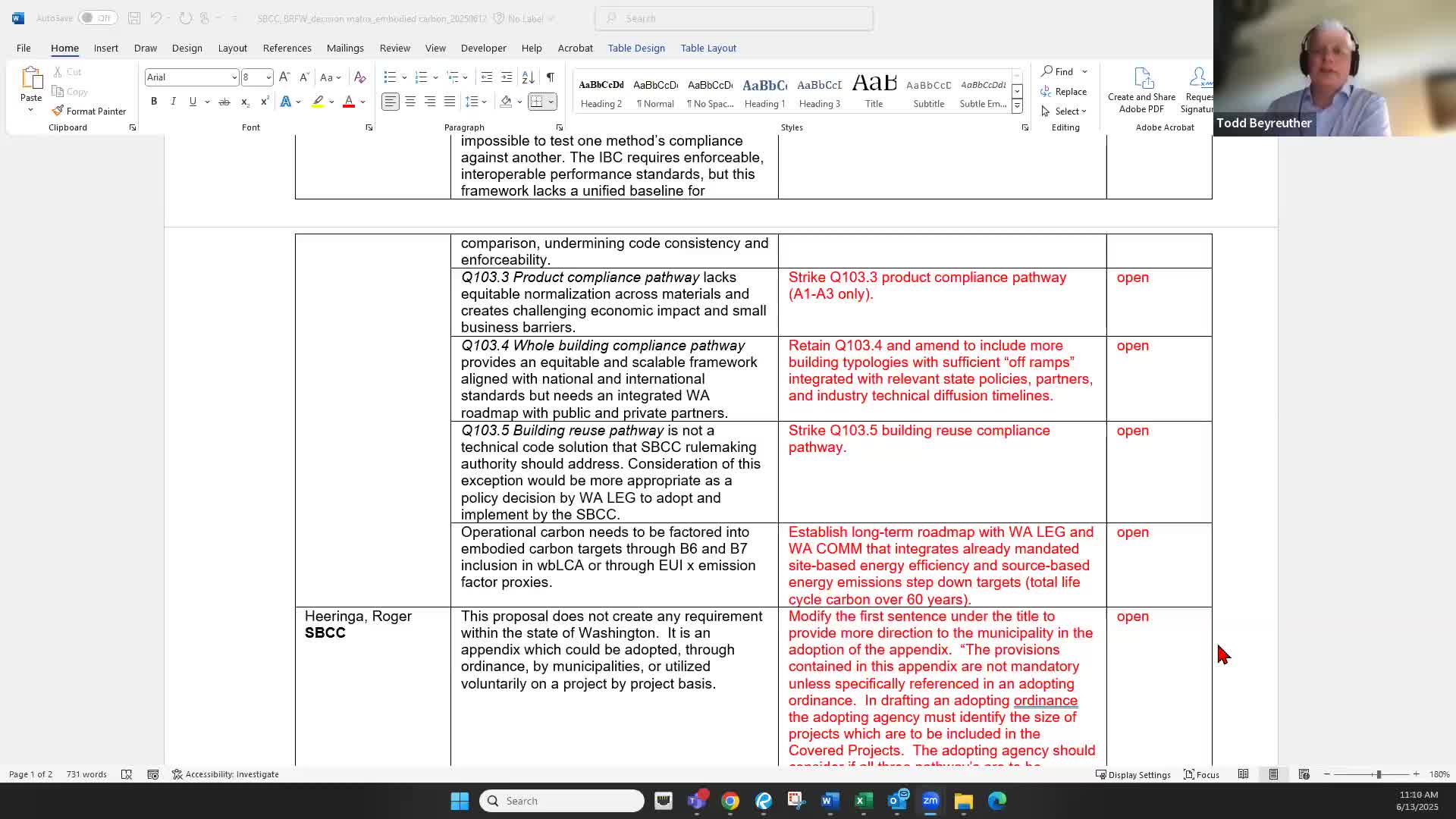Washington Building Code Committee discusses alignment with Clean Energy and emissions goals
June 14, 2025 | Building Code Council, Governor's Office - Boards & Commissions, Executive, Washington
Thanks to Scribe from Workplace AI , all articles about Washington are free for you to enjoy throughout 2025!

This article was created by AI using a video recording of the meeting. It summarizes the key points discussed, but for full details and context, please refer to the video of the full meeting. Link to Full Meeting
As committee members delved into the nuances of operational carbon and embodied carbon, they acknowledged the challenges of integrating these considerations into existing building codes. One member raised a critical question: should the building code be the primary framework for addressing emissions? This inquiry sparked a broader conversation about the long-term implications of energy efficiency and emissions reduction, especially as the state approaches more stringent energy code requirements by 2031.
The dialogue also touched on the importance of recognizing the embodied carbon of materials used in construction. Members expressed concerns about potential inequities in how different materials are treated under the proposed regulations. The discussion underscored the need for a balanced approach that considers both environmental impact and economic viability, particularly for small businesses that could be disproportionately affected by new regulations.
Katie, another committee member, suggested that defining "equity" in the context of materials and emissions could help clarify the committee's objectives. This proposal resonated with others, who emphasized the importance of ensuring that regulations do not inadvertently disadvantage certain regions or small manufacturers.
As the meeting progressed, members acknowledged the necessity of conducting economic impact analyses to understand how proposed changes might affect various stakeholders. The conversation highlighted a shared commitment to fostering innovation while being mindful of the regulatory landscape's potential to create competitive advantages or disadvantages.
In conclusion, the BFRW Committee's discussions reflect a critical moment in Washington's efforts to harmonize building codes with ambitious emissions targets. As the state navigates this complex terrain, the outcomes of these conversations will likely shape the future of construction practices and environmental policy in the region. The committee plans to continue these discussions in future meetings, emphasizing the need for collaboration and public input as they work toward actionable solutions.
Converted from SBCC BFRW Committee Meeting - June 13, 2025 meeting on June 14, 2025
Link to Full Meeting
Comments
View full meeting
This article is based on a recent meeting—watch the full video and explore the complete transcript for deeper insights into the discussion.
View full meeting
